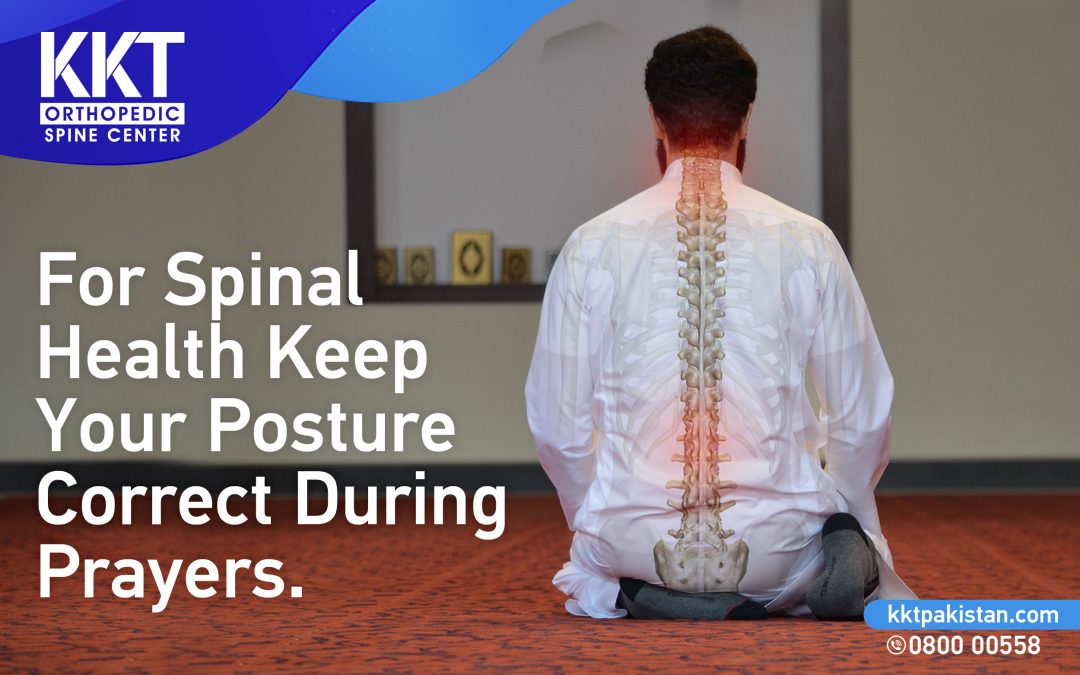During the month of Ramadan, Muslims worldwide engage in various religious practices. It is essential to raise awareness of posture correction for spinal health and adopt a habit of keeping your posture correct while fulfilling your religious obligations like praying.
Correct posture maintains spinal health, whereas incorrect posture can exert pressure on nerves and lead to muscle strain, spinal misalignment, and disc compression, which results in discomfort and pain. This usually happens during prolonged periods of standing, such as Taraweeh prayers.
Learn posture correction tips for spinal health during prolonged sitting and standing in prayer.
How can I correct my spine posture?
Are you wondering how one can even maintain posture during prayer?
Explore how it’s possible. These are the tips to maintain your posture:
- Focus on spinal alignment: Keep your head, neck, spine, and pelvis aligned while standing and bowing during prayer. Keep your spine straight and avoid excessive arching.
- Ensure your weight is evenly distributed: Don’t exert all your weight on one leg. Ensure your weight is evenly distributed between both feet while standing, and avoid leaning excessively forward or backward.
- Work on your core muscles: Work on your core muscles to provide stability and support to your spine. It can help reduce the risk of lower back pain.
- Take breaks if you feel discomfort or fatigue: If you experience fatigue or discomfort during prayer, take short breaks to rest and stretch gently. Listen to your body’s signals and avoid pushing through pain.
- Use supportive cushions: Consider using a small cushion or prayer rug to provide additional support for your knees and ankles during prostration. This can help reduce strain on these joints and promote better spinal alignment.
- Keep yourself hydrated: Drink plenty of water during non-fasting hours to stay hydrated, as dehydration can contribute to muscle stiffness and fatigue.
What is the correct posture and spine health?
Correct posture is simple. It means keeping the cervical, thoracic, and lumbar curves balanced and aligned, with weight distributed evenly over the feet. Posture correction for spinal health is important to avoid lower back discomfort and disc compression.
Conclusion
To maintain your posture, distribute weight evenly on both legs and align your neck, spine, and pelvis area. Take frequent breaks when you feel tired. In case of spinal problems, contact us at 0800-00-558 or

